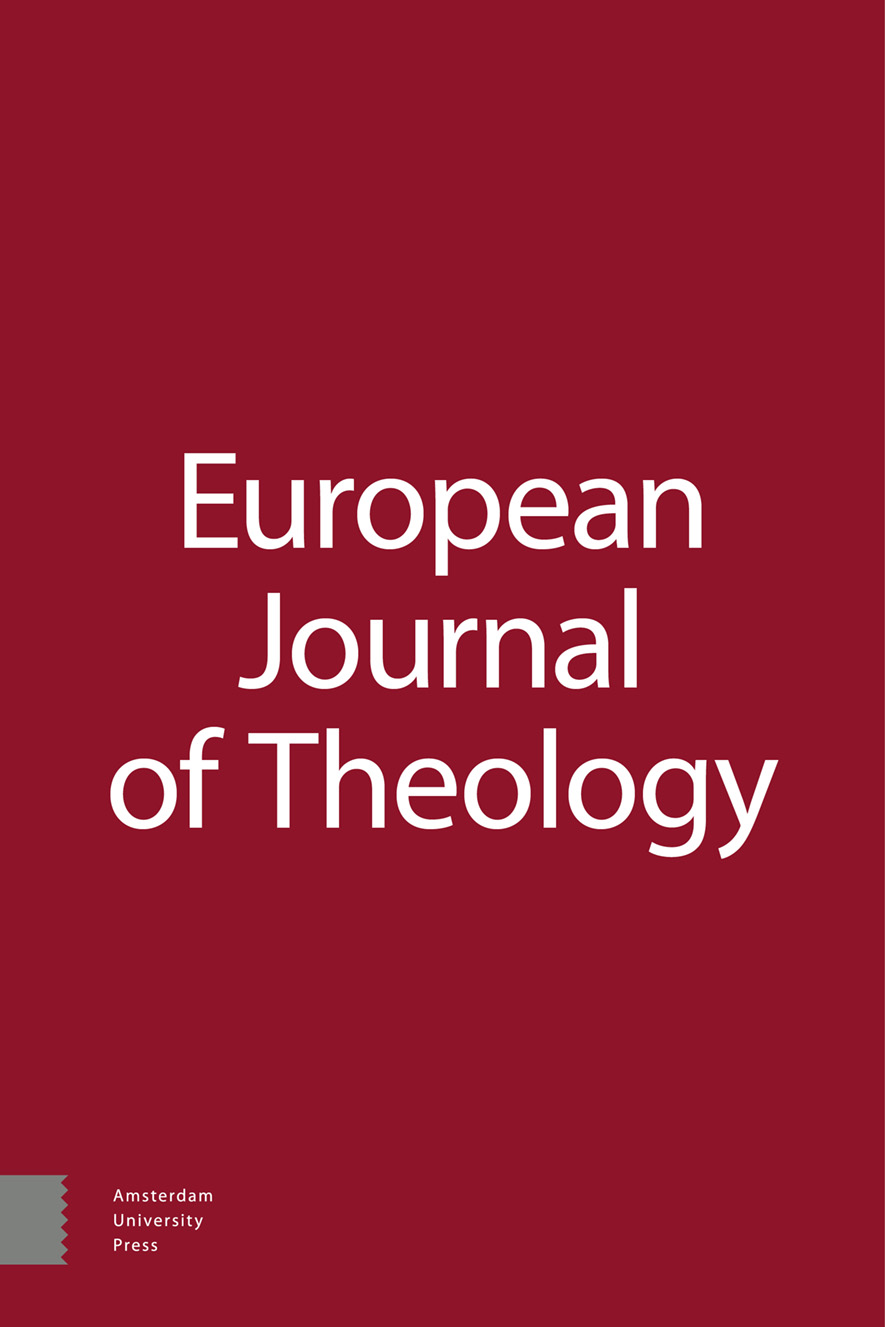-
OA„… so dass ihr ein Vorbild geworden seid für alle Gläubigen in Makedonien und Achaia“: Übergemeindliche Verbindungen im 1Thessalonicherbrief
Teil I: Einführung und Vorkommen in 1Thessalonicher 1,1–2,15
- Amsterdam University Press
- Source: European Journal of Theology, Volume 28, Issue 1, dec. 2020, p. 21 - 33
-
- 01 dec. 2020
Samenvatting
ZUSAMMENFASSUNG
Dieser Aufsatz untersucht die direkten und indirekten Hinweise auf übergemeindliche Verbindungen im 1Thessalonicherbrief. Nach einer knappen Einführung in die Bedeutung dieser Fragestellung für die neutestamentliche Wissenschaft (Vergleichbarkeit von urchristlichen Gemeinden und antiken Vereinen, Rolle des Paulus, Einleitungsfragen) und methodischen Überlegungen (Verankerung des Paulus und seiner Mitarbeiter in Gemeinden) werden die Hinweise auf übergemeindliche Verbindungen in 1Thessalonicher 1,1–2,15 untersucht. Ein besonderer Fokus liegt auf der Rolle, die Silvanus und Timotheus darin spielen. Sie sind in Gemeinden verankert, wirken in einer Vielzahl von Gemeinden und bilden ein wichtiges Verbindungsglied zwischen Gemeinden. Daneben thematisiert der Brief das Verhältnis der Thessalonicher zu anderen Christen. Im II. Teil dieses Aufsatzes werden die übrigen Vorkommen übergemeindlicher Verbindungen im 1Thessalonicherbrief behandelt. Nach einer Zusammenfassung werden abschließend die unterschiedlichen Implikationen für die neutestamentliche Wissenschaft und für die kirchliche Praxis skizziert.
RÉSUMÉ
Cet article étudie les références directes et indirectes aux liens entre communautés chrétiennes dans la première épître aux Thessaloniciens. Après une introduction sur l’importance de ce sujet pour les études néotestamentaires (la comparaison entre l’Église ancienne et les sociétés antiques, le rôle de Paul et autres questions d’introduction) et des réflexions méthodologiques (l’ancrage de Paul et de ses compagnons dans les Églises locales), les références à des liens potentiels entre communautés chrétiennes en 1 Thessaloniciens 1.1–2.15 sont étudiées. L’auteur accorde une attention particulière au rôle joué par Silas et Timothée à cet égard. Ils oeuvrent dans le cadre d’Églises locales, prennent une part active à la vie d’une multitude d’Églises et constituent ainsi un lien important entre elles. En outre, la lettre aborde comme l’un de ses thèmes centraux celui des relations des chrétiens de Thessalonique avec d’autres chrétiens. La seconde partie de cet article traitera des relations avec des mouvements para-ecclésiastiques à partir de la même épître. Elle énoncera diverses implications de cette étude pour les études néotestamentaires et pour la pratique des Églises.
SUMMARY
This essay investigates the direct and indirect references to connections between local churches in 1 Thessalonians. After a concise introduction into the relevance of this issue for New Testament studies (comparison between the early church and societies in antiquity, the role of Paul, matters of introduction) and methodological reflections (rootedness of Paul and his fellow workers in local churches), the references in 1 Thessalonians 1:1 – 2:15 to potential connections between churches are analysed. Special attention is given to the roles of Silas and Timothy in this respect. They are rooted in local churches, they play an active part in many of them and they represent important links between them. Besides, a central theme in the Letter is the relationship of the Thessalonians to other Christians. Part II of this essay will deal with the remaining occurrences of relationships between churches in 1 Thessalonians. After the summary, various implications for New Testament studies and Church praxis will be sketched.


